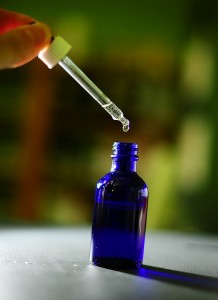 Welcome to part 2 of this article on essential oils and their many uses for everyday ailments and problems. If you missed part 1 just click here.
Welcome to part 2 of this article on essential oils and their many uses for everyday ailments and problems. If you missed part 1 just click here.
This part of the article carries on with the last four essential oils that make up your basic home kit.
Please remember when using essential oils to ALWAYS dilute them in a carrier and be aware of any medical contra indications the oil may have. This article is for information purposes only and is in no way meant to be used instead of medical advice.
6: Geranium Essential Oil
Geranium (sometimes known as ‘Geranium Rose’) is such a wonderful fragrance. It works wonderfully on both physiological and psychological levels. It’s floral aroma is brightening and uplifting, while also working as a sedative. Malte Hozzel has made this statement regarding this oil : “Geranium’s vital, sensual presence is not subtle, but direct & unavoidable, making it one of the oils of choice for aphrodisiac qualities. (Geranium Essential Oil) inspires natural beauty & enjoyment, uplifts instantly & “tonifies” the mind & intellect in a powerful, nearly demanding attitude. Mobilizing hidden creative & emotional reserves, helping us to rise to our own earthly & spiritual identify.”
Particularly noted for it’s effect on female physiologic conditions, Geranium oil can be effective for menstrual, menopausal problems, uterine and breast complaints. It’s great for your skin and can help reduce the signs of aging. It’s also great for your hair, it’s balancing properties make it suitable for dry or oily hair.
7: Rosemary Essential Oil
Rosemary essential oil is an effective physical and mental stimulant, whether used in a diffuser or in a morning bath. It’s slightly spicy, rather than floral aroma, has a warming effect particularly useful for arthritic joints and other muscular complaints. It also has a long history of treatment for colds and flu – Rosemary was a component of ‘Four Thieves Vinegar’, which robbers rubbed upon their bodies to prevent infection when up to no good during the plague years of the middle ages. Also, Rosemary is the essential oil most often associated with improving hair growth in cases of Alopecia.
8: Thyme Essential Oil
Thyme oil is a powerful antiviral, antibiotic, antiseptic and diuretic, though it should be employed with great care. There are many types of Thyme oil available, but only the ‘linalol’ chemotype is appropriate for use with children; all varieties should be diluted prior to topical application. Given the precautions, Thyme can be a first line of defense in cases of flu, being used in a room diffuser. It also supports the elimination of toxic wastes from the body (particularly noted for excessive uric acid), and it’s warming quality can eliminate mucous and phlegm. It’s application for the digestive system is that of a powerful anti-parasitic, and for the muscular system, it can be helpful for rheumatic aches and pains.
9: Lemon Essential Oil
A recent study on test-taking college students showed the diffusion of Lemon oil into a room improved test scores more than any other oil. Lemon oil has mind-brightening qualities, it lifts your mood, aids concentration and relives tiredness. Lemon oil can also be used to disinfect a room and act as a natural deodorant. Lemon has been noted to support liver function, and is also commonly used to assist in weight loss and cellulite reduction. It’s great for many skin conditions and hair problems. In blends, lemon adds a pleasant top note, and can create a synergistic effect with other oils.
That’s our basic essential oils kit !
There are so many essential oils out there, but I hope these articles have inspired you to get your own kit together to have at home for lots of your everyday needs.
